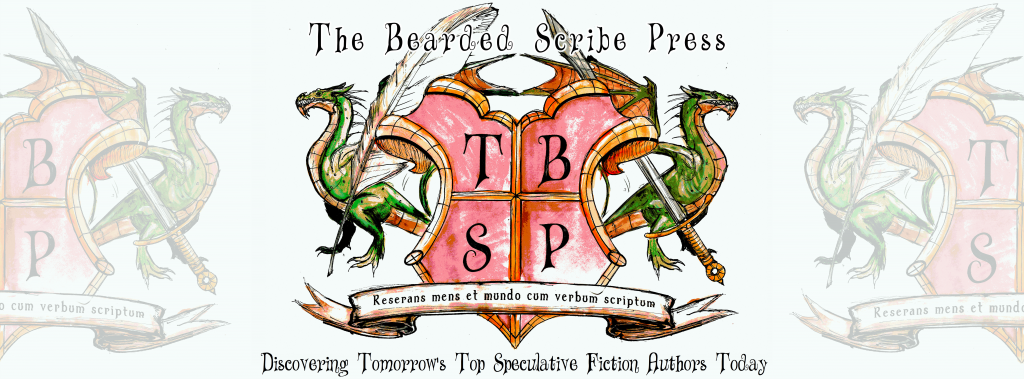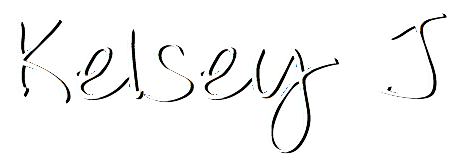***I selected this post to be featured on Book Review Blogs.***
***Please visit the site and vote for my blog!***
***Please visit the site and vote for my blog!***
Guten Tag, Beardies!
My name is Kelsey J. Mills and I come to you all the way from Canada. I am The Bearded Scribe's youngest Guest Scribe—a Science Fiction reader and writer, a sucker for aliens or robots, and a lover of social commentary. I’m so honoured to be here on The Bearded Scribe, and I hope that I manage to entertain you.
The book—technically novella—I will be spotlighting today is Enemy Mine by Barry B. Longyear and David Gerrold. Please note that this is not the original version—the copy that I have was based on the screen play written by Edward Khmara, which was based on the story written by Barry B. Longyear. Also note that I have not yet seen the movie for which the aforementioned screenplay was written.
Premise:
Earth and the Dracon Empire are locked in an interstellar war based on mutual hatred and ignorance. The only thing as hostile as the Dracs and humans are to each other is Fyrine IV, the planet where a Drac and human pilot crash during a heated battle. But the human, Willy Davidge, and the Drac, Jeriba Shigan, face an even greater battle on Fyrine IV than the rough terrain: overcoming their hatred of each other, as it quickly becomes clear that the two enemies need each other to stay alive. As the two work to overcome their differences, a friendship forms that will change both of their lives, and possibly the way the humans and the Dracs see each other. Forever.
Earth and the Dracon Empire are locked in an interstellar war based on mutual hatred and ignorance. The only thing as hostile as the Dracs and humans are to each other is Fyrine IV, the planet where a Drac and human pilot crash during a heated battle. But the human, Willy Davidge, and the Drac, Jeriba Shigan, face an even greater battle on Fyrine IV than the rough terrain: overcoming their hatred of each other, as it quickly becomes clear that the two enemies need each other to stay alive. As the two work to overcome their differences, a friendship forms that will change both of their lives, and possibly the way the humans and the Dracs see each other. Forever.
Gems for Writers:
Characterization. In a novella with only two characters for the majority of the story, the characterization had better be bang on—and Enemy Mine delivers. Both Willy and Jeriba (nick-named “Jerry” by Willy) are real, living, breathing people that come off the page and engage the audience. Willy, the human and the POV character, is an especially good example. At first glance, he seems to be the typical space cowboy: not too bright, but full of piss and vinegar; a manly man who seems to personify humanity's arrogance and offensiveness throughout the beginning of the book. However, as the story goes on and he interacts more with Jerry, his true personality is revealed; Jerry’s personality, too, is shown through his interactions with Willy. The characters' interactions with each other become less guarded, playing off each other beautifully. That’s what makes this story work, and what makes it worth reading. My personal favourite example of both the uniqueness of Willy and the way the characters play off of each other is a scene where Willy is explaining the teachings of the Mickey Mouse (the Dracs are under the impression that dear old Mickey is a great spiritual leader). This scene is driven by Willy and Jerry reading and responding to each other. Willy shows his uniqueness through his ability to analyse the role of Mickey Mouse in human popular culture, and the ideals and messages Mickey portrays. Jerry, who up to this point has been teaching Willy about his culture, and being a bit of a jerk about it sometimes, takes the role of a student. This shows his humility and his eagerness to learn previously alien concepts. If nothing else, it makes you appreciate Mickey a whole lot more.
The author’s characterization of the races themselves was also refreshing. It wasn’t like other popular alien films and books (Avatar, Starship Troopers), where cut and dry stereotypes of “humans are bad” and “aliens are good” or vice versa are used. Both races have their not-so-pleasant sides, but there are redeeming factors to both of them; both races are equally flawed, and this makes the friendship between Jerry and Willy even more lovely and profound, especially after key events in the story.
Mirror, Mirror. This story’s main strength is in its social commentary. It does what Science Fiction is best at: holding a mirror up to humanity and forcing us to see things a different way, from the point of view of another. This can often be painful because it’s hard to show humans how much we suck without whacking us over the head with how much we suck. The author shows us our ugly tendency to discriminate and hate those we don’t understand through the characters' dialogues about their respective cultures.
Most of the first part of the story is Jerry and Willy learning each other’s language. Willy learns Drac from the teachings of Shizumaat, a religious book that Jerry keeps around his neck. This gives the author the chance to explore the cultural differences without preaching to the reader. It makes sense that Willy would have questions about the things he is reading, and it also makes sense that Jerry and Willy would have to explain their turns of phrase to each other. This gives the author a chance to insert comments on our society through comparison with the Dracs. One example is when, during a discussion about food, Jerry calls Willy a “slave eater” because of the way humans eat. Willy is confused about this, and Jerry explains to him that, during the history of the Dracs, there was a war in which the victors took slaves—and, well, ate them. Willy compares the Dracon events to the Holocaust on Earth, yet another example of how being different doesn't necessarily equate with not being alike.
The biggest mirror held up to us, however, is in the overall theme of the novel: that one’s enemies are often just like us, even if they appear to be vastly different. Even though this story was written in the 1970’s, I thought it was an interesting parallel to the conflicts that the United States are having with Muslim countries, religious discrimination in the States and in my own country of Canada, and the conflicts between Israel and Palestine. Maybe it’s just a coincidence, but the religious book that Jerry gives to Willy to learn Drac is called the Talman, which sounds similar to Torrah, Talmud, and Qu'uran combined. I also found it interesting that, like Christianity in North America and Islam in the Middle East, both of the characters' belief systems hold the same tenants, namely “love thy neighbour.” The social comment in this book was truly ahead of its time. What writers can take away from this is that commenting on complex—yet broad—issues can make your story timeless, and it will give the reader the ability to insert their own cultural context into the comment you are trying to make.
Conclusion:
This is the book to read if you like stories about the power of friendship. It provides writers with insight on how to use the dynamic relationship of only two characters to create a powerful and meaningful story, and how to comment on society in a timeless way without being too preachy about it. This all combines into one moving story. This story will tug your heartstrings and make you think. If you can’t already tell, I love this story. I think you will, too.
This is the book to read if you like stories about the power of friendship. It provides writers with insight on how to use the dynamic relationship of only two characters to create a powerful and meaningful story, and how to comment on society in a timeless way without being too preachy about it. This all combines into one moving story. This story will tug your heartstrings and make you think. If you can’t already tell, I love this story. I think you will, too.
Happy Reading & Happy Scribing,
***Enemy Mine (1985), by Barry B. Longyear and David Gerrold, is published and copyright Charter Books (Berkley Publishing Group). It is available in stores, online and at your local public library.



Great work, Kelsey, and again, welcome! Can't wait to hear more from you!
ReplyDeleteThanks Elizabeth! Happy to be here!
Delete